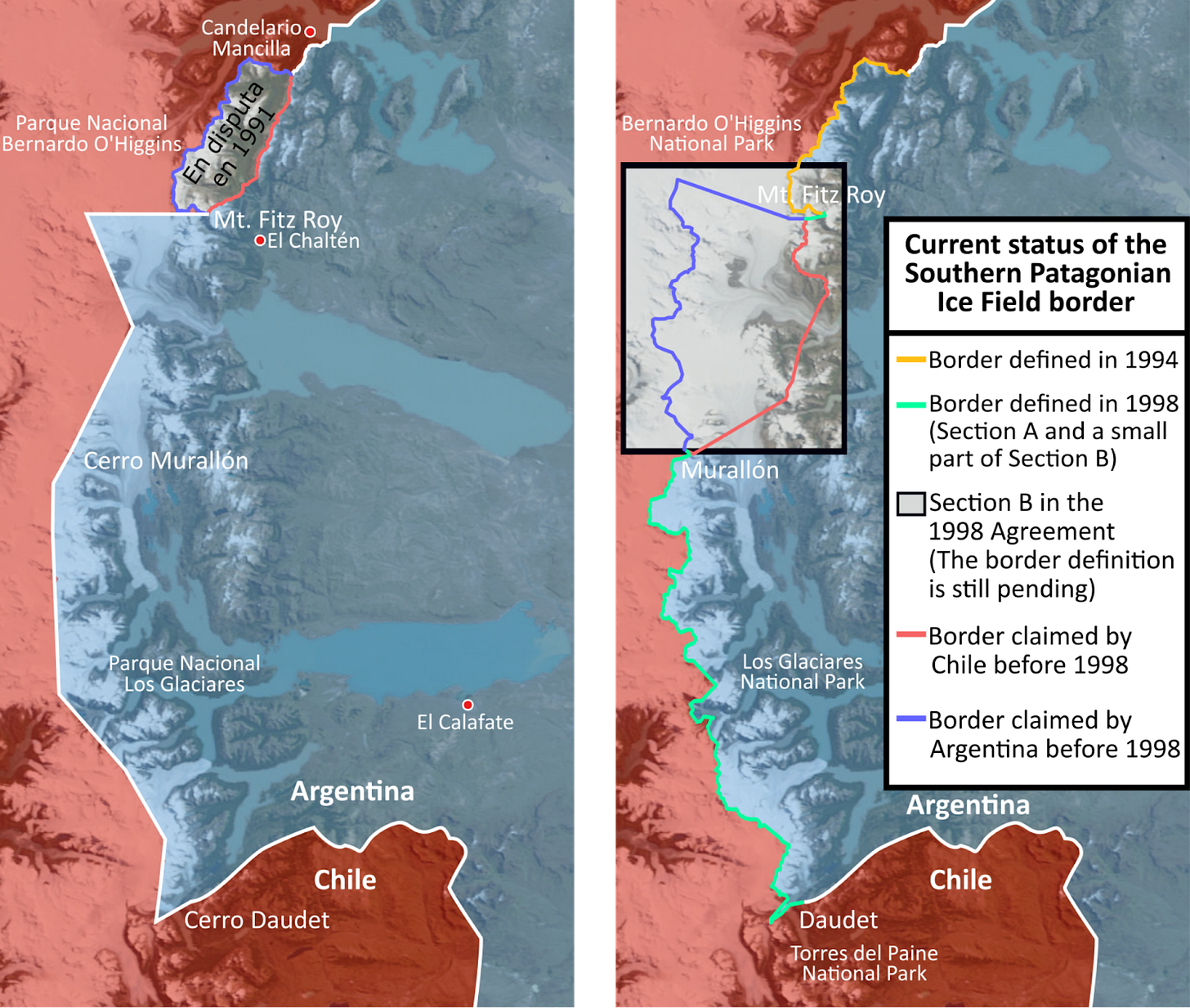How a cold border keeps two neighbors apart
A story, quote and lesson about compromise and finding middle ground
How do you define a border when ice covers everything?
The year is 1881. Argentina and Chile had recently gotten their independence in 1816 and 1818, respectively. They were relatively young and the borders between them were the least of their worries: they had to learn to run their newly-created countries. Therefore, it wasn’t until 1881, almost 70 years after their independence, that they actually sat down to define the borders.
The main point of contention was who got to control the Strait of Magellan which, before the construction of the Panama Canal in 1914, was the most efficient way to cross the South American continent. Argentina ended up recognizing Chile’s sovereignty over the Strait, however, there were several disputes that went unresolved after the Treaty of 1881.
Patagonia was largely unexplored, making it nearly impossible to establish clear borders. Adding to this complexity, the region's glaciers and icefields constantly reshape the landscape. As a result, a significant portion of the Southern Patagonian Ice Field remained undefined in ownership.
Over the years, numerous meetings, treaties, and proposals took place. The most recent were in 1991, when both countries agreed to draw a polygonal line to equitably divide the claimed territories (which was rejected by both congresses), and in 1998, when the original 1881 Treaty was ratified and properly mapped. However, a key section in the northern part of the icefield remains undefined, which is the current situation.

All in all, both countries have argued back and forth for years. It is not uncommon for disputes such as these to take a long time to solve. However, I think that the following quote from JFK, taken from his 1961 address to the Canadian parliament, accurately displays the attitude that should be on display:
“Geography has made us neighbors. History has made us friends. Economics has made us partners, and necessity has made us allies. Those whom God has so joined together, let no man put asunder.”
- John F. Kennedy (1961)
From this story and dispute, we can clearly see the lengths that people are willing to go to to try and get their way. What started as a problem from a lack of knowledge and technology, snowballed into a matter of national pride for both Chileans and Argentineans. It is interesting to note that the polygonal proposal signed by both countries’ presidents in 1991 actually divided the territories in a relatively equal way (both countries would end up losing around 450 sq mi of their claimed land). However, both countries rejected the proposal regardless.
Just as personal happiness often hinges on finding middle ground and accommodating others' perspectives, the resolution of this geopolitical conflict relies on the countries' willingness to compromise. The ongoing negotiations and adjustments reflect the broader principle that achieving lasting peace and satisfaction—whether in international diplomacy or personal relationships—requires a readiness to find common ground and make mutual concessions.
So now I ask you:
When conflict or discussion pops up in your day-to-day life, what will you do different to find that middle ground?



Wow. What a great story and a relation to life. Interesting that I really did not know about this despite already visiting both countries it reminded me of another world conflict which is similar yet much complicated to resolve which is that of Palestina vs Israel since there are two populations fighting for one home. But your insights into the key element of commitment to resolve are great. Thanks